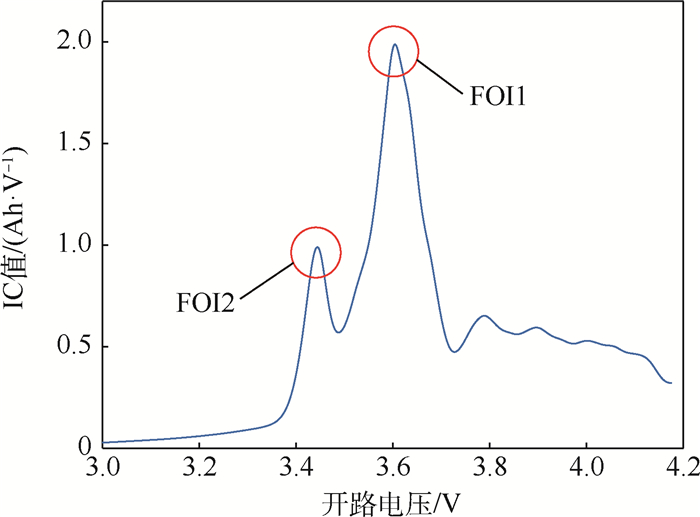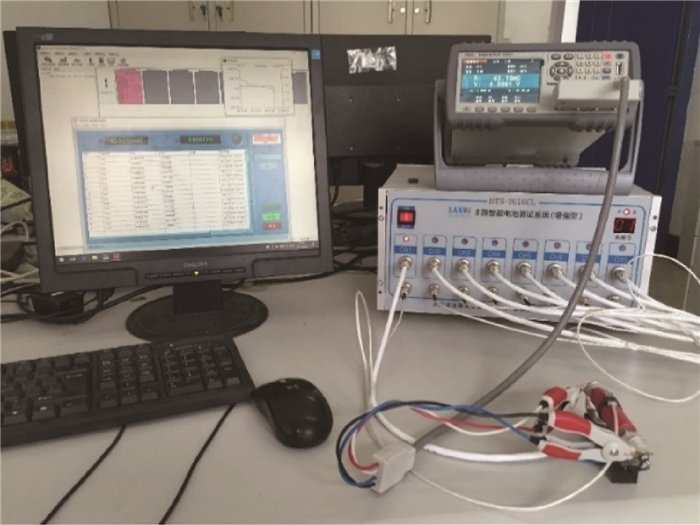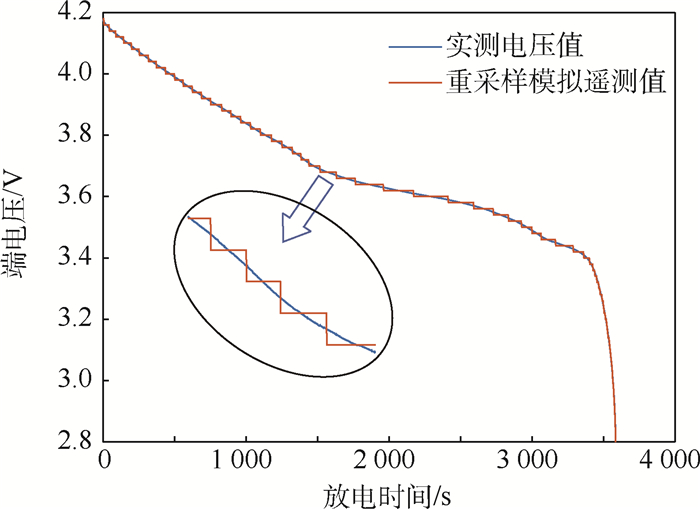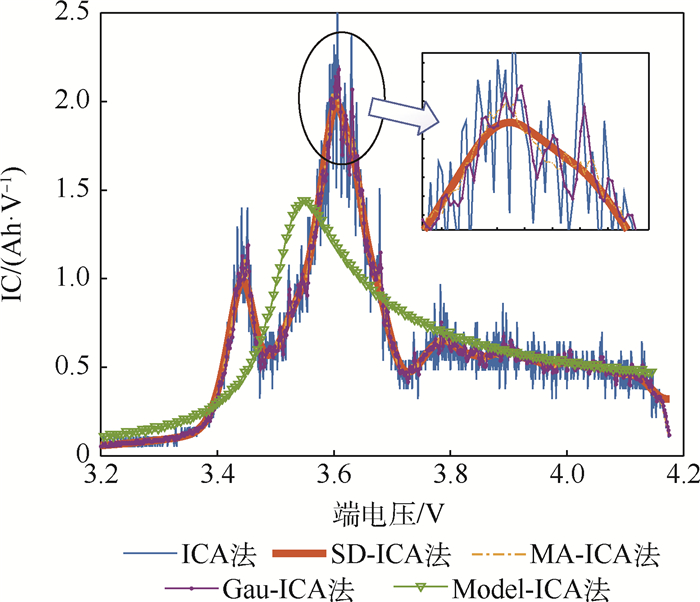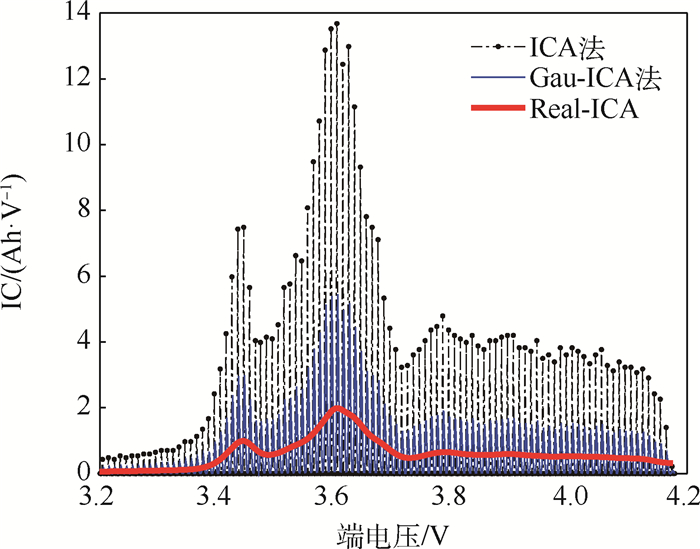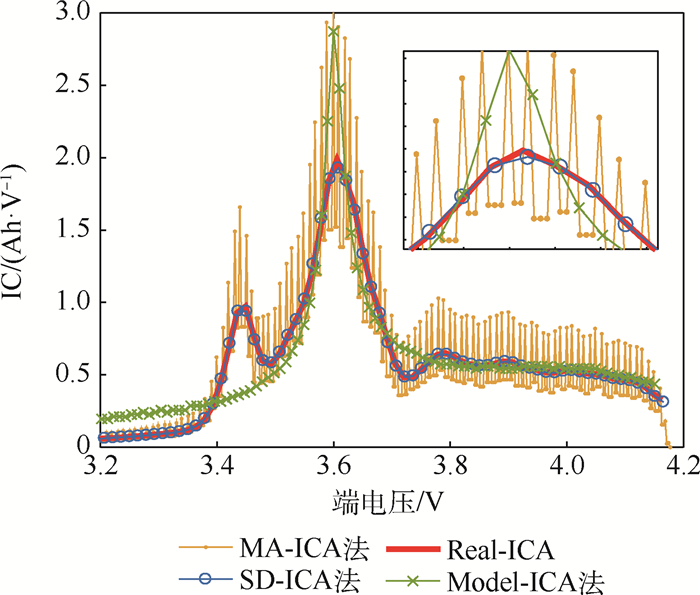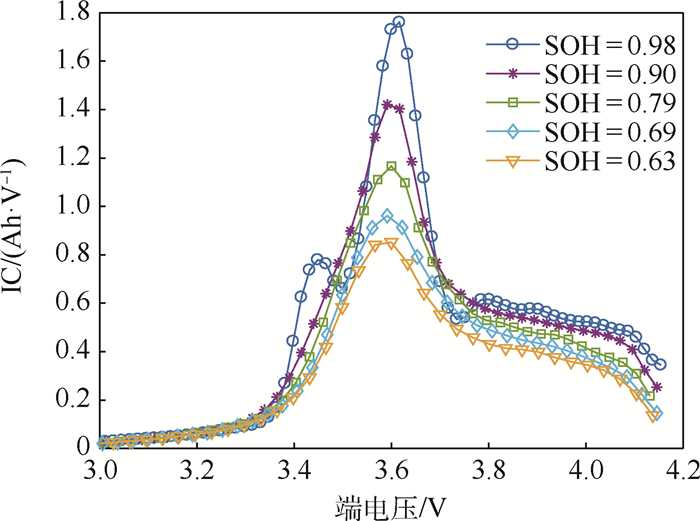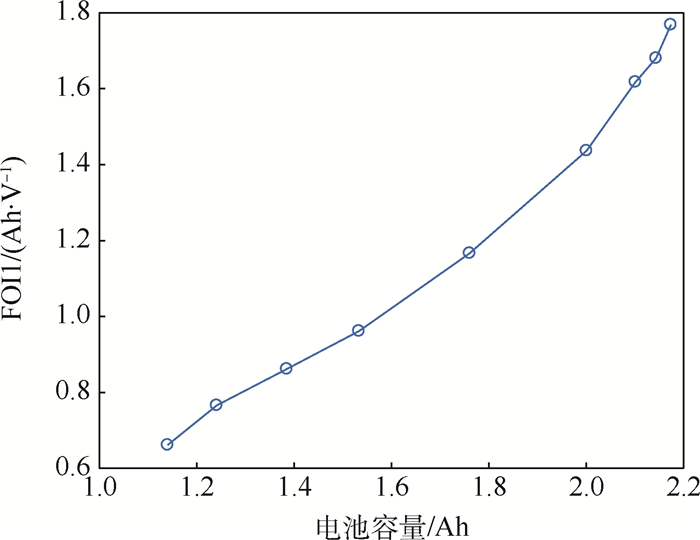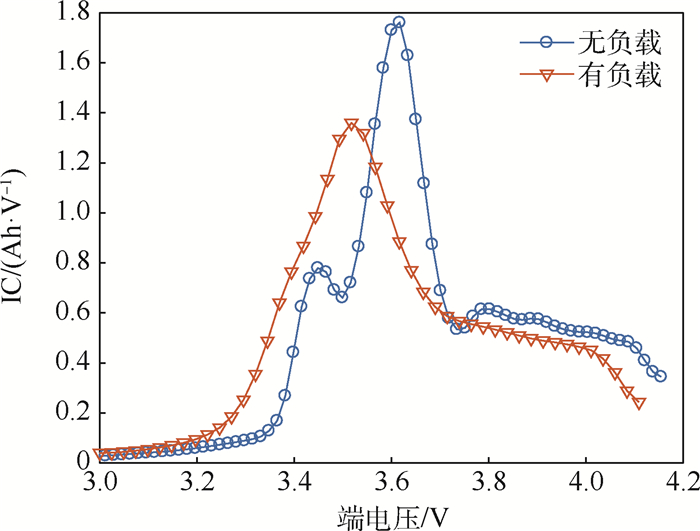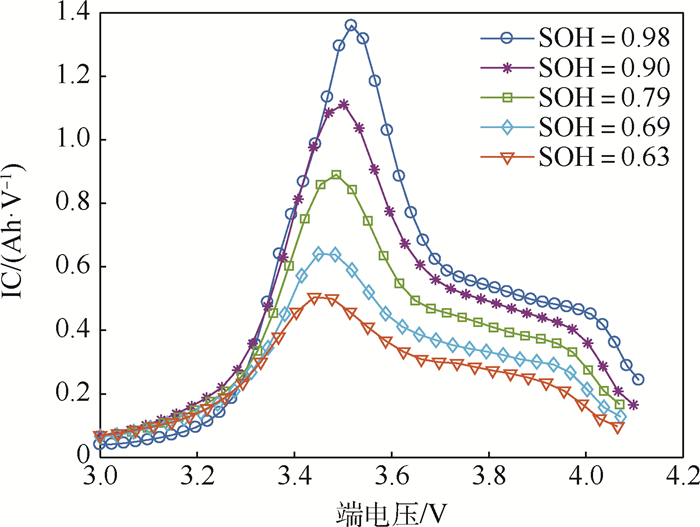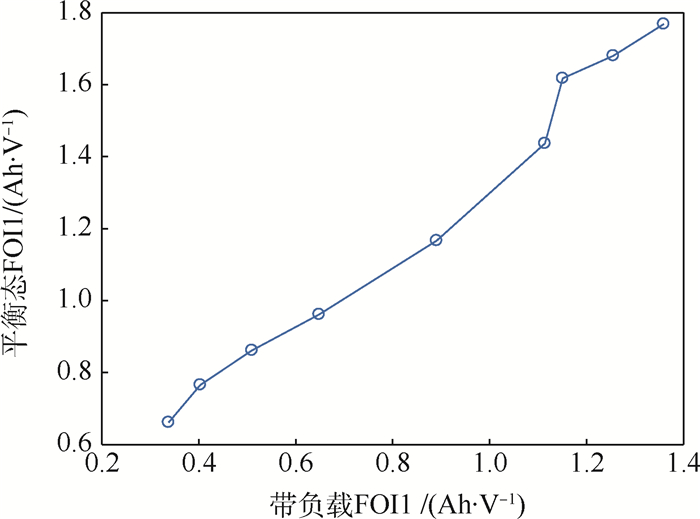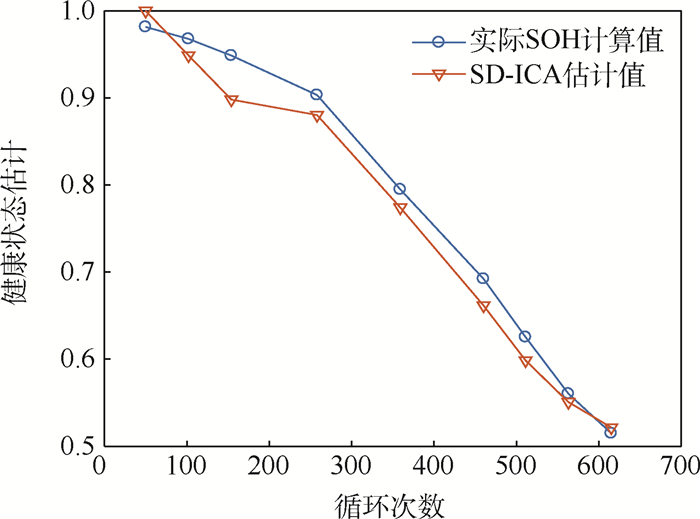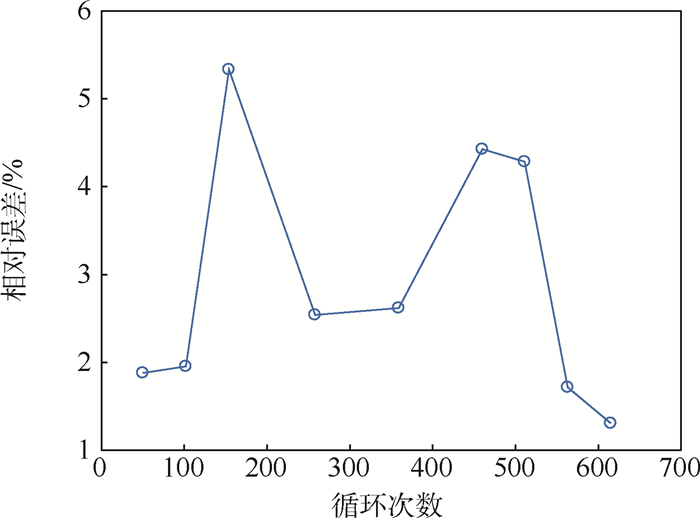A state of health estimation method for satellite battery based on smooth and discharge applicative increment capacity analysis
-
摘要:
针对容量增量分析(ICA)法应用在卫星电池的健康状态(SOH)估计中存在较大误差的问题,提出了基于带平滑处理并使用放电数据的容量增量分析(SD-ICA)的电池健康状态估计方法。首先,利用光滑样条函数的拟合结果具有二阶导连续的特性,对低分辨率的遥测数据进行平滑处理,从而提高了计算结果的准确性。其次,针对ICA必须使用微小电流放电数据的限制,推导出有负载条件下的容量增量(IC)计算方法,降低了对卫星电池放电工况的要求。最后,利用IC曲线的第一特征点(FOI1)与电池容量的关系,对卫星电池的健康状态进行估计。经验证,所提方法具有对数据分辨率要求低、不需要增加电池工况、计算简便等优势,可以准确地从卫星遥测数据中估计电池健康状态。研究成果在卫星电池的健康管理和任务规划中具有重要的应用价值。
-
关键词:
- 容量增量分析(ICA) /
- 卫星 /
- 锂电池 /
- 健康状态(SOH)估计 /
- 低分辨率遥测数据
Abstract:Aimed at the large error when using Increment Capacity Analysis (ICA) to estimate the State of Health (SOH) of satellites battery, this paper proposes an advanced SOH estimation method based on Smooth and Discharge applicative Increment Capacity Analysis (SD-ICA). First, the proposed method does the smoothing processing to the low-resolution telemetry data by using the fitting results of the smooth spline functions which have the continuous second-order derivative. Thus the calculation accuracy is improved. Then, in consideration of the limitation that ICA must use the micro current discharge data, the IC calculation method under load conditions is deduced, which reduces the requirements for the satellite battery discharge conditions. Finally, a linear regression relationship between the battery capacity and Features of Interest 1 (FOI 1) of IC curve is found and used to estimate the SOH of the satellite battery. The results show that the proposed SOH estimation method can accurately obtain the battery SOH from satellite telemetry data. In addition, this method is easy to calculate, has low requirements for sampling resolution, and does not need to add battery working conditions. Therefore, it is valuable for battery health management and mission planning of satellite.
-
表 1 电池测试仪主要参数
Table 1. Main parameters of battery tester
参数 数值 通道数 8 充放电电流/A 0~5 充放电电压/V 0~5 电流分辨率/mA 0.1 电压分辨率/mA 0.1 温度分辨率/℃ 0.1 最小记录间隔/s 0.1 表 2 IC值计算误差
Table 2. Calculation error of IC
误差 SD-ICA法 ICA法 MA-ICA法 Gau-ICA法 Model-ICA法 MAE 0.009 7 0.150 9 0.071 1 0.032 1 0.129 5 RMSE 0.017 7 0.191 2 0.111 7 0.052 1 0.194 5 -
[1] 王东, 李国欣, 潘延林. 锂离子电池技术在航天领域的应用[J]. 上海航天, 2000, 17(1): 54-58. doi: 10.3969/j.issn.1006-1630.2000.01.011WANG D, LI G X, PAN Y L. The technology of lithium ion batteries for spaccraft application[J]. Aerospace Shanghai, 2000, 17(1): 54-58(in Chinese). doi: 10.3969/j.issn.1006-1630.2000.01.011 [2] BERECIBAR M, DEVRIENDT F, DUBARRY M, et al. Online state of health estimation on NMC cells based on predictive analytics[J]. Journal of Power Sources, 2016, 320: 239-250. doi: 10.1016/j.jpowsour.2016.04.109 [3] 罗萍, 谭玲生, 王捷, 等. 锂离子蓄电池组在GEO卫星上的应用[J]. 电源技术, 2018, 42(1): 1-2. doi: 10.3969/j.issn.1002-087X.2018.01.001LUO P, TAN L S, WANG J, et al. Application of Li-ion battery in GEO satellite[J]. Chinese Journal of Power Sources, 2018, 42(1): 1-2(in Chinese). doi: 10.3969/j.issn.1002-087X.2018.01.001 [4] BERECIBAR M, GANDIAGA I, VILLARREAL I, et al. Critical review of state of health estimation methods of Li-ion batteries for real applications[J]. Renewable and Sustainable Energy Reviews, 2016, 56(1): 572-587. [5] LI J, ADEWUYI K, LOTFI N, et al. A single particle model with chemical/mechanical degradation physics for lithium ion battery state of health (SOH) estimation[J]. Applied Energy, 2018, 212(15): 1178-1190. [6] CUI Y, ZUO P, DU C, et al. State of health diagnosis model for lithium ion batteries based on real-time impedance and open circuit voltage parameters identification method[J]. Energy, 2018, 144: 647-656. doi: 10.1016/j.energy.2017.12.033 [7] CHEN L, LV Z, LIN W, et al. A new state-of-health estimation method for lithium-ion batteries through the intrinsic relationship between ohmic internal resistance and capacity[J]. Measurement, 2018, 116(1): 586-595. [8] EROL S, ORAZEM M E. The influence of anomalous diffusion on the impedance response of LiCoO2|C batteries[J]. Journal of Power Sources, 2015, 293(20): 57-64. [9] HAN X, OUYANG M, LU L, et al. A comparative study of commercial lithium ion battery cycle life in electrical vehicle: Aging mechanism identification[J]. Journal of Power Sources, 2014, 251(1): 38-54. [10] DUBARRY M, TRUCHOT C, CUGNET M L, et al. Evaluation of commercial lithium-ion cells based on composite positive electrode for plug-in hybrid electric vehicle applications. Part Ⅰ: Initial characterizations[J]. Journal of Power Sources, 2011, 196(23): 10328-10335. doi: 10.1016/j.jpowsour.2011.08.077 [11] WENG C, CUI Y, SUN J, et al. On-board state of health monitoring of lithium-ion batteries using incremental capacity analysis with support vector regression[J]. Journal of Power Sources, 2013, 235(1): 36-44. [12] ZHENG L, ZHU J, LU D D, et al. Incremental capacity analysis and differential voltage analysis based state of charge and capacity estimation for lithium-ion batteries[J]. Energy, 2018, 150: 759-769. doi: 10.1016/j.energy.2018.03.023 [13] LI X, JIANG J, WANG L Y, et al. A capacity model based on charging process for state of health estimation of lithium ion batteries[J]. Applied Energy, 2016, 177(1): 537-543. [14] FENG X N, LI J, OUYANG M, et al. Using probability density function to evaluate the state of health of lithium-ion batteries[J]. Journal of Power Sources, 2013, 232(18): 209-218. [15] WENG C H, SUN J, PENG H. A unified open-circuit-voltage model of lithium-ion batteries for state-of-charge estimation and state-of-health monitoring[J]. Journal of Power Sources, 2014, 258(14): 228-237. [16] LI Y, ABDEL-MONEM M, GOPALAKRISHNAN R, et al. A quick on-line state of health estimation method for Li-ion battery with incremental capacity curves processed by Gaussian filter[J]. Journal of Power Sources, 2018, 373(1): 40-53. [17] FLY A, CHEN R. Rate dependency of incremental capacity analysis (dQ/dV) as a diagnostic tool for lithium-ion batteries[J]. Journal of Energy Storage, 2020, 29(1): 101329. [18] HE J, BIAN X, LIU L, et al. Comparative study of curve determination methods for incremental capacity analysis and state of health estimation of lithium-ion battery[J]. Journal of Energy Storage, 2020, 29: 101400. doi: 10.1016/j.est.2020.101400 [19] ZHANG S, ZHAI B, GUO X, et al. Synchronous estimation of state of health and remaining useful lifetime for lithium-ion battery using the incremental capacity and artificial neural networks[J]. Journal of Energy Storage, 2019, 26: 100951. doi: 10.1016/j.est.2019.100951 [20] BLOOM I, JANSEN A N, ABRAHAM D P, et al. Differential voltage analyses of high-power, lithium-ion cells[J]. Journal of Power Sources, 2005, 139(1-2): 295-303. doi: 10.1016/j.jpowsour.2004.07.021 [21] ZENG G, BAI Z, HUANG P, et al. Thermal safety study of Li-ion batteries under limited overcharge abuse based on coupled electrochemical-thermal model[J]. International Journal of Energy Research, 2020, 44(5): 3607-3625. doi: 10.1002/er.5125 [22] CHEN J, WANG R, LI Y, et al. A simplified extension of physics-based single particle model for dynamic discharge current[J]. IEEE Access, 2019, 7: 186217-186227. doi: 10.1109/ACCESS.2019.2961509 -







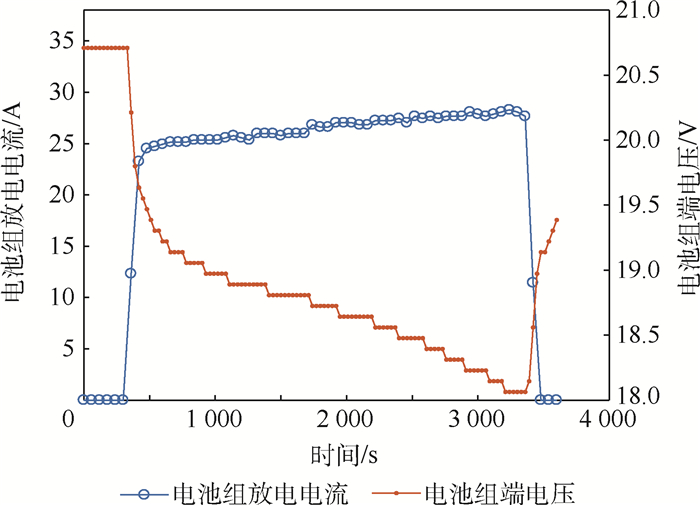
 下载:
下载:

